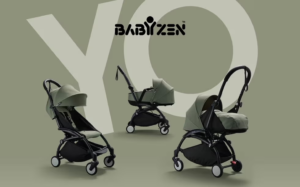
janitor ai
In today’s fast-paced world, automation has seeped into nearly every industry, and the world of facilities management is no different. “Janitor AI” is a term that might initially raise a few eyebrows. Why would artificial intelligence be associated with janitorial services? However, Janitor AI is not about robots sweeping floors (though, in some cases, it could be). It’s about harnessing the power of AI to revolutionize facility management, streamline operations, and enhance the cleanliness and efficiency of large commercial and industrial spaces.
In this article, we’ll dive into the world of Janitor AI, explore its various applications, understand how it’s changing facility management, and see what the future holds for this emerging technology.
1. What is Janitor AI?

Janitor AI, at its core, is the application of artificial intelligence and automation to the field of facility management, specifically focusing on janitorial and cleaning services. However, it goes far beyond simple cleaning tasks. Janitor AI integrates machine learning algorithms, data analytics, and robotics to perform a range of duties from optimizing cleaning schedules to managing inventory, ensuring equipment maintenance, and even monitoring overall facility hygiene.
Think of Janitor AI as an intelligent system that not only cleans but thinks, learns, and improves over time. It tracks data, understands patterns, and predicts future needs to ensure that facilities are always at their peak performance. It can also adjust schedules based on real-time data, ensuring that cleaning resources are allocated efficiently and only when necessary.
The idea behind Janitor AI is not just to reduce human effort but to enhance cleanliness standards and create more hygienic, safer environments. By leveraging AI, businesses can ensure that their facilities are cleaned more effectively, while reducing costs and improving resource management.
2. The Role of AI in Modern Facility Management
Artificial intelligence has already transformed several industries, from healthcare to finance, and facility management is quickly catching up. Modern facility management involves overseeing large, complex spaces such as office buildings, factories, hospitals, and universities, which all require meticulous attention to detail in maintenance and cleanliness. AI in facility management allows for smarter, more efficient processes that are less dependent on manual intervention.
In terms of janitorial services, AI can determine which areas of a building are used more frequently, optimizing cleaning schedules accordingly. By leveraging IoT (Internet of Things) sensors and AI-driven analytics, facility managers can monitor foot traffic, air quality, waste levels, and more, giving them real-time insights into when and where cleaning or maintenance is most needed.
Additionally, AI allows for predictive maintenance. For example, AI systems can predict when equipment like HVAC systems, elevators, or even cleaning machines might fail or need servicing, thus preventing downtime. This reduces the overall cost of operations and ensures smoother facility functioning.
In essence, AI doesn’t just help clean a building — it helps manage it in its entirety, providing insights that improve efficiency across the board.
3. How Janitor AI Works
Janitor AI operates on a combination of technologies, including AI algorithms, machine learning, robotics, IoT sensors, and cloud-based systems. These components work together to gather data, analyze it, and automate decision-making processes related to cleaning and maintenance.
One of the primary ways Janitor AI works is through IoT sensors placed throughout a building. These sensors collect data on various parameters such as room occupancy, air quality, waste levels, and surface cleanliness. This data is then fed into an AI system, which processes the information and determines the optimal times for cleaning, maintenance, or even replenishing supplies.
For example, in a large office building, Janitor AI might track how frequently different restrooms are used. It could then schedule cleaning for those with higher usage more frequently while minimizing cleaning in less-used areas, ensuring efficient use of janitorial staff and resources.
Robots play a key role as well. Robotic vacuum cleaners, scrubbers, and even window washers can be deployed in conjunction with AI algorithms. These robots can map out the environment and perform cleaning tasks autonomously, freeing up human workers to focus on more complex tasks that require critical thinking or manual dexterity.
In addition, Janitor AI can be integrated with inventory management systems, automatically alerting facility managers when cleaning supplies or maintenance parts are running low, ensuring that there are no disruptions in operations due to supply shortages.
4. Applications of Janitor AI in Real-World Scenarios
Janitor AI has a wide range of applications across different industries. In office buildings, it can streamline janitorial operations by scheduling cleanings during off-peak hours or by focusing efforts on high-traffic areas, such as restrooms, cafeterias, and meeting rooms.
In hospitals, Janitor AI can play a crucial role in infection control. It can monitor the cleanliness of high-risk areas like operating rooms, patient wards, and waiting areas. By using real-time data, it ensures these areas are cleaned more frequently and with greater precision, reducing the risk of hospital-acquired infections.
In manufacturing facilities, Janitor AI can help maintain cleanliness in critical areas where dust or debris could interfere with production lines. It can also monitor equipment performance and schedule maintenance to prevent costly downtimes.
In educational institutions, Janitor AI can be used to keep classrooms, cafeterias, and restrooms clean based on occupancy levels. It can also help maintain overall facility hygiene, ensuring a safer environment for students and staff.
Other industries, such as hospitality and retail, can also benefit from Janitor AI by ensuring that hotels, malls, and stores remain spotless and operationally efficient, contributing to higher customer satisfaction.
5. The Advantages of Implementing Janitor AI
The benefits of Janitor AI go beyond simply maintaining cleanliness. One of the key advantages is improved efficiency. With AI-driven cleaning systems, tasks can be automated, scheduled, and optimized based on real-time data, reducing the need for human intervention. This leads to reduced labor costs and allows cleaning staff to focus on more complex tasks that require critical human input.
Another advantage is the ability to maintain consistent cleanliness standards. Traditional cleaning methods can be inconsistent, with some areas being neglected while others are cleaned too often. Janitor AI ensures that every area receives the appropriate level of attention based on actual usage, improving overall hygiene and reducing the risk of contamination or spread of illness.
Moreover, Janitor AI can lead to cost savings. By optimizing the use of cleaning supplies and equipment, facilities can reduce waste and operational costs. Predictive maintenance helps prevent costly equipment failures, and energy efficiency can be improved by optimizing the operation of HVAC systems and other utilities.
Janitor AI also brings sustainability to the forefront. By minimizing resource waste and energy consumption, AI-driven systems contribute to eco-friendly facility management practices, helping companies meet sustainability goals and reduce their environmental footprint.
6. Challenges and Limitations of Janitor AI
While Janitor AI offers numerous benefits, it is not without its challenges. One of the main limitations is the initial cost of implementing AI-based systems. Installing IoT sensors, AI software, and robotic equipment can require a significant upfront investment. Smaller businesses with limited budgets might find it difficult to justify this expense, even if the long-term savings could offset the initial costs.
Another challenge is the reliance on data. AI systems thrive on large volumes of accurate data. If the data collected by sensors is incomplete or inaccurate, the AI may make incorrect decisions, leading to suboptimal cleaning schedules or maintenance planning.
There is also a learning curve associated with Janitor AI. Facility managers and staff need to be trained to understand and work alongside these systems. Resistance to change can be a barrier, particularly for those who are used to traditional facility management methods.
Lastly, there is always the concern of job displacement. While Janitor AI can make operations more efficient, it could reduce the need for human janitorial staff. Companies will need to balance the benefits of automation with the need to preserve jobs and upskill their employees.
7. Future Trends in Janitor AI and Facility Management
The future of Janitor AI is incredibly promising, with advancements in AI and robotics paving the way for even more sophisticated solutions. One key trend is the increased use of autonomous robots for cleaning tasks. These robots are becoming smarter, more agile, and capable of handling more complex environments, such as staircases or uneven surfaces.
Another trend is the integration of AI with smart building technologies. As buildings become more intelligent, with integrated systems for lighting, climate control, and security, Janitor AI will play a crucial role in managing these interconnected systems. For example, Janitor AI could work with building management systems to ensure that cleaning is done when rooms are unoccupied, or to adjust ventilation systems in response to air quality data.
AI-driven sustainability initiatives are also on the rise. Janitor AI systems are increasingly being used to reduce waste, optimize energy use, and improve water efficiency. As environmental concerns become more critical, these systems will help businesses meet regulatory requirements and corporate sustainability goals.
Finally, the rise of 5G and cloud computing will allow for even faster data processing and more seamless integration of AI into facility management. With improved connectivity, Janitor AI systems will be able to make real-time decisions faster, enhancing overall building performance.





